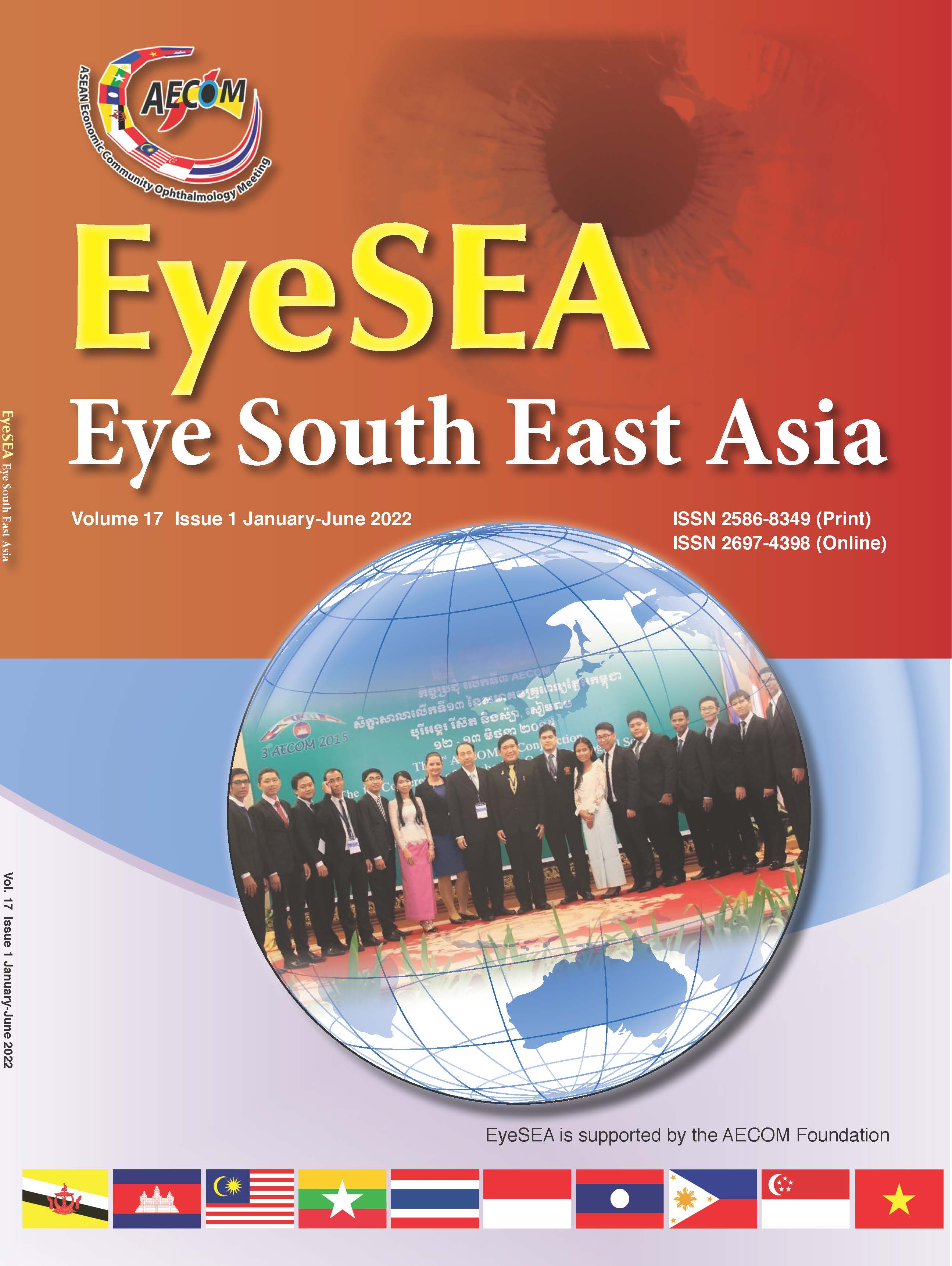The Study of Factors Predicting Anatomical Success and Visual Outcome Following Macular Hole Surgery in Thammasat University Hospital
Main Article Content
Abstract
Purpose: To evaluate Predictors and outcomes for anatomical success in macular hole surgery
Methods: This was a retrospective case-control study of patients diagnosed with macular hole (MH). The preoperative data of the patients including age, gender, laterality, duration of the symptoms, stage and macular hole size were collected. The preoperative
measurement of macular hole size using optical coherence tomography was performed. All patients underwent standardized macular hole surgery, which was pars plana vitrectomy with internal membrane (ILM) peeling, internal gas tamponade, and postoperative face
down positioning, with at least 3 months postoperative follow-up. The primary outcome measurement was anatomical closure of MH, while secondary outcome measurement was postoperative visual acuity improvement.
Results: From the 91 eyes operated, anatomical closure of MH was achieved in 59 eyes (64.8%). The duration of follow-up was at least 3 months. There were statistically significant associations between gender (P=0.025), stage of MH (P<0.001), size of MH (P<0.001), the duration of symptoms (P=0.015), and anatomical closure of MH. Mean BCVA statistically significant improved in success anatomical closure group (-0.39 ± 0.41logMAR ; CI -0.5 to -0.28, P<0.001)
Conclusion: Gender, stage, size, and the duration of symptoms of MH are predictors of successful anatomical closure postoperatively in MH surgery with chance of patients having better visual outcome.
Article Details

This work is licensed under a Creative Commons Attribution-NonCommercial-NoDerivatives 4.0 International License.
References
Atul Kumar, Varun Gogia, Prakhar Kumar, Srivats Sehra, Shikha Gupta. Evaluation of predictors for anatomical success in macular hole surgery in Indian population. Indian J Ophthalmology 2014;62:1141-5.
B Gupta, D A H Laidlaw, T H Williamson, S P Shah, R Wong, S Wren. Predicting visual success in macular hole surgery. Br J Ophthalmol 2009;93:1488-91.
Sentaro Kusuhar, Akira Negi. Predicting visual outcome following surgery for idiopathic macular holes. Ophthalmologica 2014;231:125-32.
Alexander A. Shpak, Dmitry O. Shkvorchenko, Ilias Kh. Sharafetdinov, Olga A. Yukhanova. Predicting anatomical results of surgical treatment of idiopathic macular hole. Int J Ophthalomol 2016;9:253-7.
Madgula IM, Costen M. Functional outcome and patient preferences following combined phaco-vitrectomy for macular hole without prone posturing. Eye 2008;22:1050-53.
Lai MM, Williams GA. Anatomical and visual outcomes of idiopathic macular hole surgery with internal limiting membrane removal using low-concentration indocyanine green. Retina 2007;27:477-82.
Jaycock PD, Bunce C, Xing W, et al. Outcomes of macular hole surgery: implications for surgical management and clinical governance. Eye 2005; 19:879-84.
Kang HK, Chang AA, Beaumont PE. The macular hole: report of an Au s t ralian su rgical se rie s and meta-analysis of the literature. Clin Experiment ophthalmol 2000;28:298-308.
Khawahir-Scala FE, Maino A, Saha K, et al. To posture or not to posture after macular hole surgery. Retina 2008;28:60-5.
Merkur AB, Tuli R. Macular hole repai r wi th limi ted non supine positioning. Retina 2007;27:365-9.


